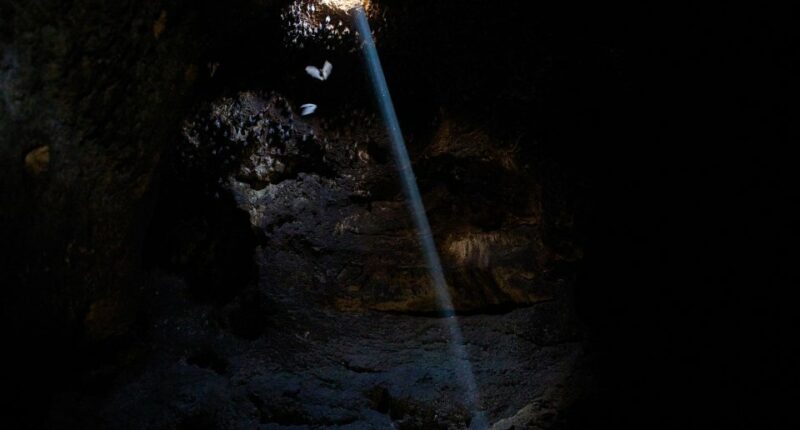Share this @internewscast.com
ARCHAEOLOGISTS may have found the oldest burial site in the world – after discovering carefully arranged human remains dating back 100,000 years.
Boffins made the groundbreaking find at a bat-infested cave in Israel – where they unearthed ancient yet well-preserved bodies in neat formations.
The jaw-dropping discovery may mark itself as the oldest burial site in the world.
Archaeologists have shown great interest in the items discovered alongside the remains, which might have been used in ceremonies or rituals to pay respect to the deceased.
These pieces of evidence could shed light on how ancient ancestors thought about the afterlife.
One of the directors of the cutting-edge excavation Yossi Zaidner hailed the find as “an amazing revolutionary innovation for our species”.
The discoveries at Tinshemet Cave in central Israel were published in an academic journal earlier this year.
They build on previous discoveries in northern Israel and add to a growing understanding of the origins of human burial.
Since 2016, researchers at Tinshemet have claimed to uncover the remains of five ancient humans, dating back approximately 110,000 to 100,000 years.
The fascinating skeletal remains were found arranged in fetal positions in a deep pit.
Objects found around them included basalt pebbles, animal remains or fragments of ochre.
Since these curious objects had no use for daily life, scientists believe they were part of burying rituals.
Tinshemet Cave is located in the hills of central Israel – and is filled with squeaking fruit bats.
Zaidner mentioned that there is a stone mound both inside and outside the cave, describing it as one of the top three or four essential locations for studying human evolution and behavior during the Paleolithic era.
The Paleolithic era is known as the Stone Age because of the onset of stone tools.
It lasted from as early as 3.3 million years ago until around 10,000 years ago.
Tinshemet Cave is from the Middle Paleolithic era, roughly between 250,000 to 30,000 years ago.
Findings from the extraordinary cave were published in March – with a key discovery being the remains of five early humans.
Researchers are now using hand chisels and delicate, pen-sized pneumatic drills that resemble dental tools, to pick apart their findings.
But they will need many more years to fully excavate the site.
A dozen archaeology students have spread out across the site, painstakingly documenting and removing each fragment of tool, object or bone.
Archaeology professor Christian Tryon said: “Tinshemet is exceptionally important to archaeologists because the local climate preserved the bones, tools, and ornaments in good condition, unlike many other parts of the world where these items were lost to time.”
The high quality of preservation is said to be because of ash from frequent fires, possibly from rituals.
The large amount of ash mixed with rainfall and Israel’s acidic limestone, created optimal conditions for preservation, the professor added.
One skeleton was in such good condition that archaeologists could see how the skeleton’s fingers were interwoven, with their hands clasped beneath their head.
Tyron said the new finds at Tinshemet Cave back up earlier digs at Skhul and Qafzeh caves, showing early humans were starting to bury their dead more widely.
The older sites, dug decades ago, left many questions, but Tinshemet’s precise dating confirms the pattern.
Some experts even argue burials may go back 200,000 years – citing the Homo naledi in South Africa.
But many scientists doubt the claims, saying there is not enough evidence and calling the ideas controversial.
























